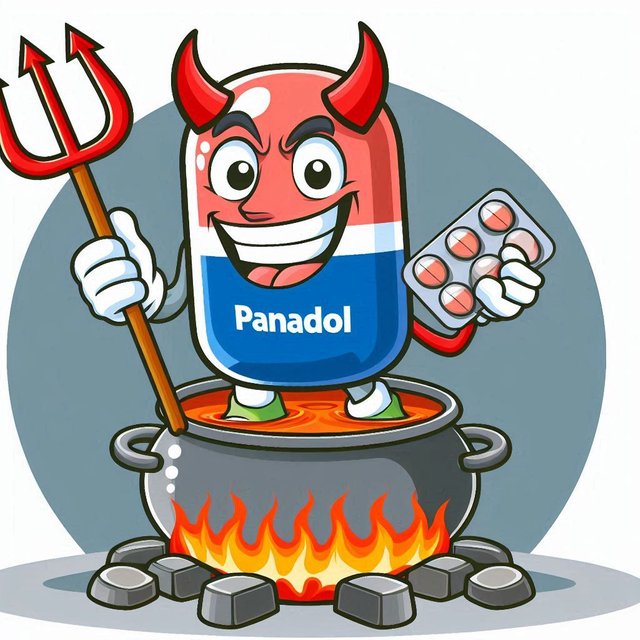The Misuse of Panadol and Its Harmful Effects
Panadol, known generically as paracetamol or acetaminophen, is one of the most commonly used over-the-counter medications worldwide. It is widely trusted for its effectiveness in relieving pain and reducing fever. However, despite its widespread use and reputation as a safe drug when taken correctly, Panadol can be misused, leading to serious health consequences. This article explores the potential for misuse of Panadol, the associated health risks, and measures to prevent such misuse.
Understanding Panadol and Its Uses
Panadol is primarily used to treat mild to moderate pain, such as headaches, menstrual cramps, toothaches, and musculoskeletal pain. It is also effective in reducing fever. Unlike nonsteroidal anti-inflammatory drugs (NSAIDs) like ibuprofen, Panadol does not have anti-inflammatory properties, which makes it gentler on the stomach and suitable for a broader range of people, including those with certain medical conditions.
How Panadol is Misused
Despite its therapeutic benefits, Panadol is not without risks, especially when misused. Misuse can occur in various forms, including:
- Overdose: Taking more than the recommended dose in an attempt to achieve faster or stronger pain relief.
- Chronic Use: Using Panadol for prolonged periods without medical supervision, often for chronic pain management.
- Combining with Other Medications: Taking Panadol alongside other medications that contain acetaminophen, leading to an unintentional overdose.
- Recreational Use: Rare but possible, some individuals misuse Panadol recreationally for its potential psychoactive effects in large doses.
The Dangers of Overdose
One of the most common forms of misuse is taking excessive amounts of Panadol, either intentionally or accidentally. The recommended maximum daily dose for adults is typically 4 grams, divided into doses of up to 1 gram every 4-6 hours. Exceeding this limit can lead to severe liver damage, known as hepatotoxicity.
The liver metabolizes acetaminophen, but in excessive amounts, the normal pathways become saturated, and the drug is converted into a toxic metabolite called NAPQI. Normally, NAPQI is detoxified by glutathione, but when glutathione is depleted by an overdose, NAPQI accumulates, causing liver cell damage and potentially leading to acute liver failure.
Symptoms and Consequences of Overdose
Symptoms of a Panadol overdose may not appear immediately. Initially, an individual might experience nonspecific symptoms like nausea, vomiting, sweating, and lethargy. As liver damage progresses, more serious symptoms can develop, including:
- Abdominal pain, particularly in the upper right quadrant
- Jaundice (yellowing of the skin and eyes)
- Confusion or altered mental state
- Hypoglycemia (low blood sugar)
- Coagulopathy (impaired blood clotting)
If untreated, severe overdose can lead to liver failure, requiring liver transplantation, or result in death. The antidote for acetaminophen overdose is N-acetylcysteine (NAC), which can replenish glutathione levels and help prevent liver damage if administered promptly.
Risks of Chronic Use
Chronic use of Panadol, especially in doses higher than recommended, can also lead to significant health issues. Prolonged usage can cause cumulative liver damage even at doses that do not cause immediate overdose symptoms. This is particularly concerning for individuals with preexisting liver conditions, alcohol use disorders, or those who take other medications that affect liver function.
Combining Medications
Many over-the-counter and prescription medications contain acetaminophen, including cold and flu remedies, prescription painkillers, and other combination drugs. Individuals often unintentionally consume multiple sources of acetaminophen, resulting in accidental overdose. This underscores the importance of reading labels carefully and consulting healthcare professionals when taking multiple medications.
Preventing Misuse
Preventing Panadol misuse involves both public education and individual responsibility. Key measures include:
- Education: Raising awareness about the dangers of overdose and the importance of adhering to recommended dosages.
- Clear Labeling: Ensuring that all medications containing acetaminophen are clearly labeled to prevent unintentional overdose.
- Consultation: Encouraging individuals to consult healthcare providers before starting new medications, especially if they are already taking Panadol.
- Monitoring: Healthcare professionals should monitor patients who require long-term pain management to prevent chronic misuse.
Conclusion
While Panadol is a highly effective medication for pain and fever when used correctly, misuse can lead to severe and potentially life-threatening consequences. Understanding the risks and adhering to recommended dosages is crucial for preventing harm. Public education, clear labeling, and professional guidance are essential to ensure that Panadol remains a safe and effective treatment option. By taking these precautions, individuals can benefit from its therapeutic effects without falling victim to its potential dangers.
